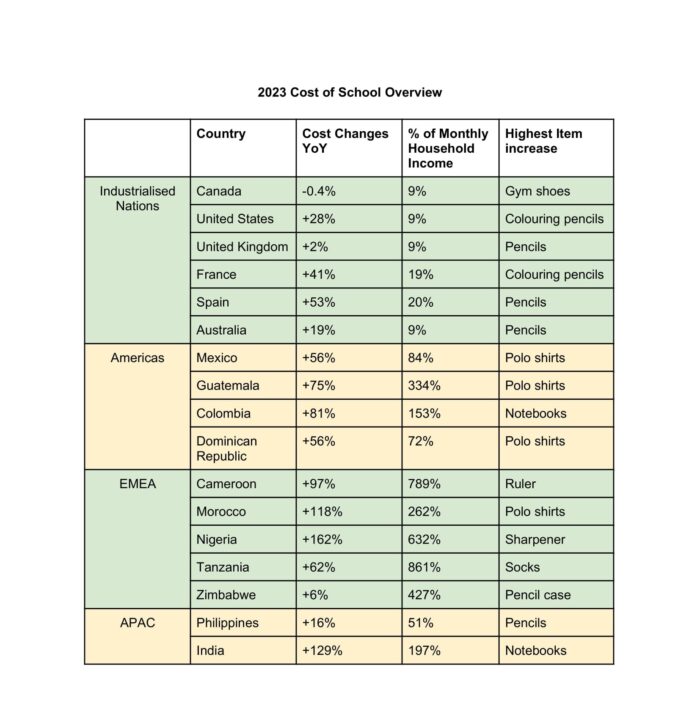WorldRemit, a digital remittances brand within Zepz, releases its third year of global data and findings, to understand how the cost of school supplies impacts families around the world.
As inflation persists and supply chain issues continue to arise across multiple sectors, it comes as no surprise that on average, countries observed can expect costs to rise.
Findings for Kenya show the total cost per child is Ksh68,701. Given the average household size in Kenya of 3.23, the total cost per household is estimated at Ksh 221,904.23. This is higher than average incomes for most households in the country, with the survey showing the cost of education for most households is 1054.31% or approximately 10 times their average monthly household income.
Across countries where people have higher monthly incomes, Canada, the UK, and Australia saw nominal decreases in the percentage of income they can expect to allocate, while France and Spain saw notable increases. In France, families can expect to allocate 5% of their monthly budget this year, while in Spain, they can expect to allocate 7% more than last year on basic school supplies.
In other parts of the world, cost changes were far more drastic, where yearly changes averaged an increase of 78%. 1 in 9 people1 worldwide rely on money sent from friends and relatives who have migrated abroad for work. For families whose incomes simply cannot accommodate the cost of these fundamental supplies, remittances make a world of difference in their ability to afford these supplies, as well as steep costs like tuition, transportation, and childcare.

While practically every country in the study had increased costs, certain items have drastically increased. For example, in Australia, a case of 12 pencils has increased more than 4x the cost of the previous year, and the cost of notebooks in India is almost 6x as expensive as in 2022.
3.6% or 281 million2 of the global population identify as migrants, a number that has steadily increased over the last 30 years. Similarly, remittances have increased from US $126B in 2000 to more than $700B in 2020, with the US, UAE, Saudi Arabia, Switzerland, and Germany operating as the top 5 sending countries as of 2020.
While rising costs of living have forced migrants to be more conscious about how they allocate funds for remittances, as of July 2022, WorldRemit data indicates education is one of the top 3 reasons people send money.

